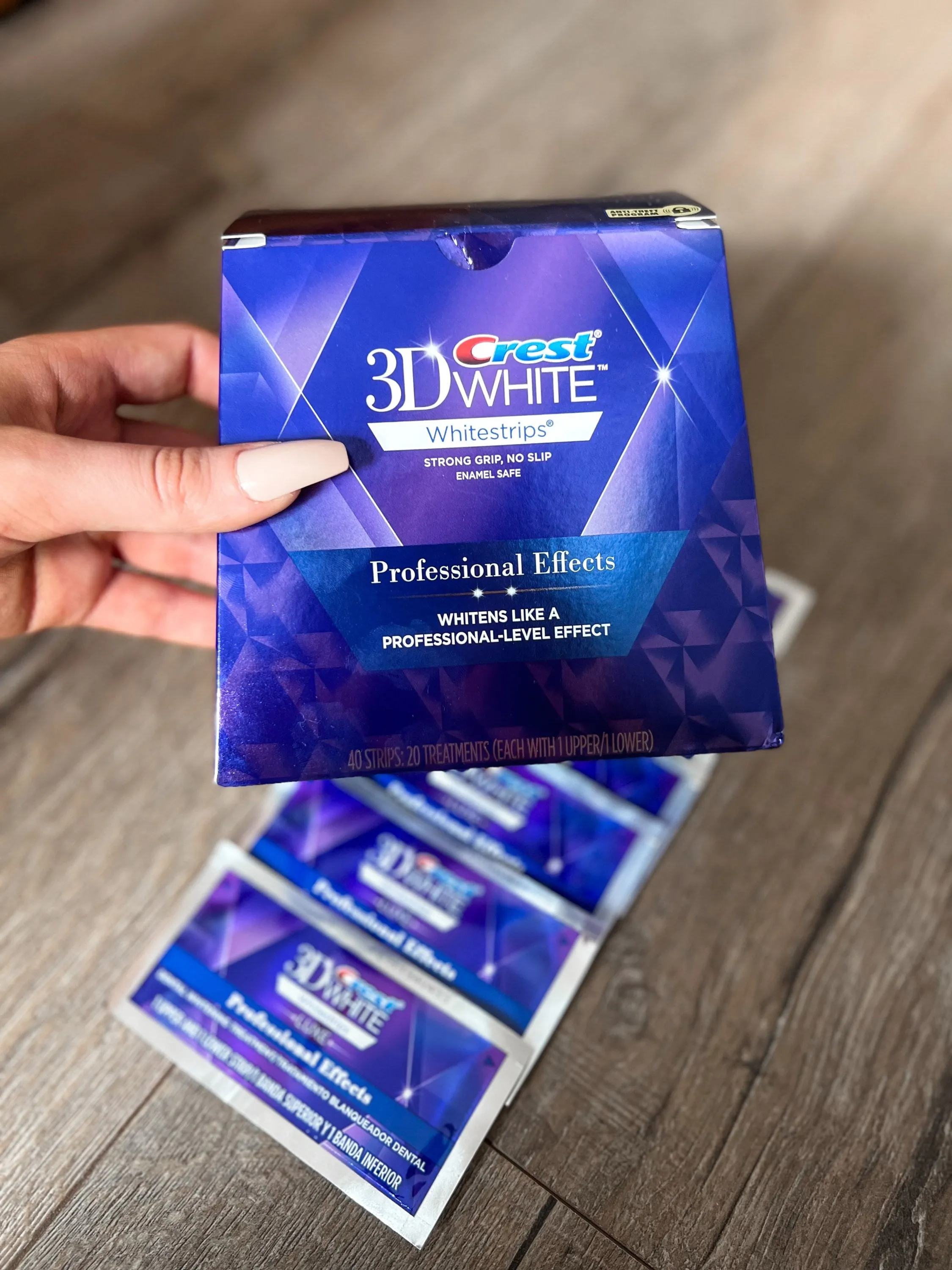Crest Whitening Strips Ingredients What Are They?
Crest Whitening Strips have become a popular choice for achieving a brighter smile at home. Understanding the ingredients within these strips is crucial for both knowing how they work and ensuring their safe use. The primary goal of these strips is to whiten teeth by removing stains and discoloration. This process involves a combination of active and inactive ingredients, each playing a specific role in the overall effectiveness of the product. The key active ingredient is a bleaching agent, responsible for breaking down the stains on the tooth enamel. However, several other ingredients contribute to the strip’s functionality, from adhesion to the teeth to enhancing the user experience. Understanding each component helps consumers make informed decisions and use the product correctly for the best results. Choosing the right product for your teeth is essential.
Hydrogen Peroxide The Key Whitening Agent
Hydrogen peroxide is the star of the show when it comes to whitening teeth with Crest Whitening Strips. It acts as a bleaching agent, capable of penetrating the enamel and dentin of the teeth to break down stain molecules. The concentration of hydrogen peroxide in the strips varies depending on the specific product, but it is generally within a range that is effective yet safe for home use. As it comes into contact with the teeth, hydrogen peroxide undergoes an oxidation process, releasing oxygen radicals. These radicals then interact with the stain molecules, breaking them down into smaller, less visible components. This process results in a noticeable lightening of the teeth, making them appear whiter. Hydrogen peroxide is scientifically proven as a safe and effective tooth whitening product.
How Hydrogen Peroxide Works on Teeth

The mechanism of action of hydrogen peroxide involves the release of oxygen free radicals, which are highly reactive molecules that can penetrate the enamel and dentin. Once inside the tooth structure, these radicals interact with the stain molecules, which are often large and complex organic compounds. The free radicals break these stain molecules down into smaller, less complex ones. This process effectively disrupts the bonds that hold the stains together, causing them to lose their color. The smaller molecules are then naturally removed by the body, leading to a whiter appearance of the teeth. The efficacy of hydrogen peroxide depends on its concentration and the duration of contact with the teeth. That is why, adhering to the instructions on the package is very important.
Polymers The Adhesive Ingredients
Polymers play a crucial role in Crest Whitening Strips by providing adhesion to the teeth. These ingredients create the flexible, thin film that adheres to the teeth’s surface, ensuring the active whitening agent remains in contact with the enamel. The adhesive properties of the polymers are designed to provide a secure yet gentle grip, allowing the strips to stay in place during the recommended wear time. They are also engineered to be easily removable without causing damage to the tooth enamel. Different types of polymers can be used in the formulation, and their selection is based on their ability to provide the required adhesion, flexibility, and safety. These ingredients help to make the strips user-friendly and effective. The right amount of adhesion is essential, as is the amount of time the strips are in contact with your teeth.
The Role of Polymers in Strip Adhesion
The primary function of polymers in the whitening strips is to ensure the strip adheres firmly to the tooth surfaces. This is critical because it allows the hydrogen peroxide to remain in contact with the enamel, maximizing its whitening effect. Without effective adhesion, the whitening agent might be washed away by saliva, significantly reducing its efficacy. Polymers must also be flexible to conform to the unique contours of each tooth and ensure complete coverage. Furthermore, the adhesive must be safe, non-toxic, and removable without leaving any residue or causing damage to the enamel. This careful balance ensures that the whitening process is both effective and safe. Many factors are considered when selecting the best adhesion properties.
Flavoring Agents Enhancing the Experience

Flavoring agents are included in Crest Whitening Strips to enhance the user experience. Hydrogen peroxide, while effective, can have an unpleasant taste, and the addition of flavoring helps to mask this taste and make the application process more pleasant. These flavorings are usually subtle, providing a refreshing or slightly sweet taste that complements the whitening action. Flavoring is carefully selected to not interfere with the whitening efficacy. It helps to create a more positive experience, encouraging users to adhere to the recommended use. The selection of flavoring agents also considers safety, ensuring the ingredients are safe for oral use and do not cause allergic reactions. Finding the right balance between flavor and effectiveness is essential for product satisfaction.
Common Flavoring Agents in Strips
Common flavoring agents used in Crest Whitening Strips often include mint-based flavors, such as peppermint or spearmint. These flavors provide a refreshing sensation that helps to neutralize the taste of hydrogen peroxide and leave the mouth feeling clean and fresh. Other flavor options might include citrus or fruit-based flavors, which can offer a slightly sweeter and more enjoyable experience. The specific flavor chosen depends on the product formulation and the target consumer. These flavors are typically added in small amounts to ensure they do not overpower the product’s primary function, whitening teeth. Flavoring agents are just one of the many ingredients that make Crest Whitening Strips an enjoyable product.
Sodium Hydroxide Maintaining pH Balance
Sodium hydroxide is an ingredient often found in Crest Whitening Strips and is primarily used to regulate the pH level of the product. Maintaining the right pH is important for both the effectiveness of the whitening agent and the safety of the user. Sodium hydroxide acts as a buffering agent, ensuring the product remains within a certain pH range. This helps to stabilize the hydrogen peroxide and optimize its whitening action. A stable pH can also help to prevent the product from being overly acidic, reducing the risk of causing sensitivity or irritation to the gums or teeth. By managing the pH, the product can provide effective whitening results while minimizing potential side effects.
The Function of Sodium Hydroxide

The primary function of sodium hydroxide in Crest Whitening Strips is to control the pH. It prevents the product from becoming too acidic, which could irritate the gums and increase tooth sensitivity. By keeping the pH within an optimal range, sodium hydroxide helps to ensure that the hydrogen peroxide remains stable and effective in its whitening function. It helps to create an environment where the whitening agent can work most effectively. The correct pH balance is essential for safe use and to achieve the desired results. Sodium hydroxide is carefully formulated to work in conjunction with other ingredients to create a safe and effective product for users. Understanding its role is crucial for understanding the product’s overall function.
Titanium Dioxide Ensuring Strip Appearance
Titanium dioxide is sometimes used in Crest Whitening Strips as a colorant. It contributes to the opaque or white appearance of the strips, which can be important for several reasons. The white color helps the strips to blend better with the teeth, making them less noticeable during use. It also provides a visual signal of the product’s presence, which can be helpful for the user to ensure full coverage of the teeth. Titanium dioxide is a safe ingredient, widely used in various consumer products. It does not contribute to the whitening process but is added to improve the aesthetics of the strips, contributing to a positive user experience. Ensuring the strip appears white is essential for a positive user experience.
Titanium Dioxide Role in Whitening
While titanium dioxide does not actively participate in the whitening process, its presence in the strip enhances the overall user experience. The white appearance ensures that the strips are less visible when applied, which improves the user’s comfort and confidence during treatment. It also contributes to the product’s aesthetic appeal, making it more desirable for consumers. Titanium dioxide does not interfere with the effectiveness of the hydrogen peroxide. The role of titanium dioxide is solely to improve the product’s appearance and user experience. The aesthetic of the strips is just one part of the overall design of the product.
Conclusion

Understanding the ingredients in Crest Whitening Strips is essential for both consumers and those interested in teeth whitening. Each ingredient has a specific purpose, working together to deliver brighter smiles. From the active whitening agent, hydrogen peroxide, to the adhesive polymers, flavoring, and other ingredients, each component is carefully chosen and formulated to achieve the best results while ensuring user safety. Knowing the function of each ingredient helps users make informed decisions and follow the product instructions correctly for optimal whitening. By understanding the science behind these strips, users can confidently achieve a brighter, more confident smile. Proper usage and an understanding of the ingredients are essential for obtaining the most effective whitening results.
